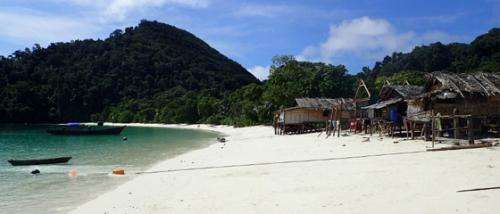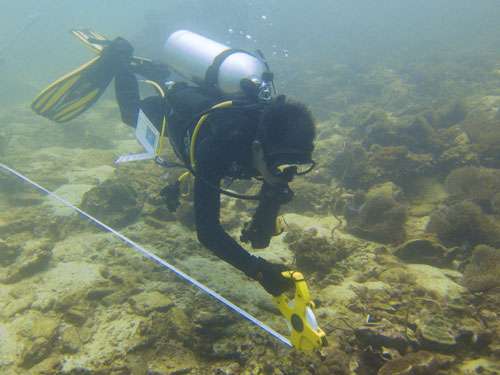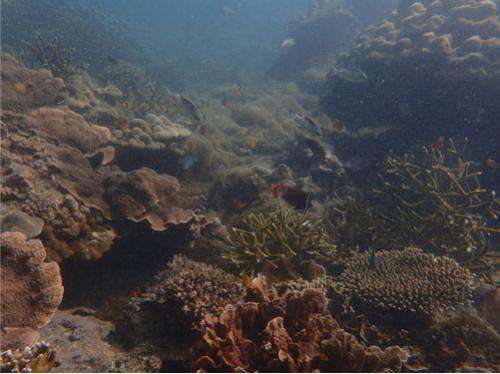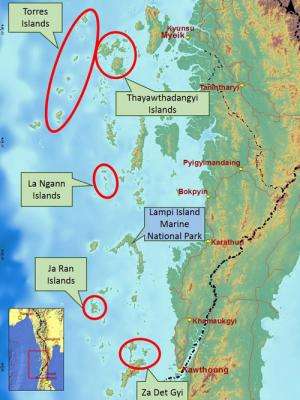New Marine Protected Area proposed for Myanmar

The proposed establishment of a new Marine Protected Area (MPA) in the Myeik archipelago has received enthusiastic support by participants in a workshop held recently in Myanmar's Tanintharyi region.
The MPA has been proposed in a bid to conserve the Myeik archipelago's unique biodiversity from the serious threats it faces, and to support sustainable fisheries.
Situated in the north-eastern Andaman Sea the archipelago comprises over 800 islands of white sandy beaches and coral reefs teeming with a diverse array of marine life.
What lies beneath…
Scientific surveys conducted over the last two years by Fauna & Flora International (FFI) in collaboration with the Ministry of Environmental Conservation and Forestry (MOECAF), the Department of Fisheries and the Navy, identified 287 species of coral and 365 reef fish species – as well as reefs rich in echinoderms, crustaceans, molluscs and sponges.
The coral reefs, along with seagrass areas and mangrove forests, provide crucial nursery habitat for many of the marine life species upon which the fishing industry depends. Overfishing, destructive fishing methods including continued use of dynamite, mono-filament fishing nets, poisons and bottom trawlers have taken a heavy toll on fish populations and are devastating coral reef communities.
MPA establishment to benefit all
Frank Momberg, FFI Myanmar Programme Director said, "Myanmar's fisheries resources have declined dramatically over the last decade. However, by establishing a marine protected area network Myanmar will protect important nursery grounds for fish, coral reef and mangrove areas critical to maintaining the livelihood of coastal fishing communities and the fishing industry."

The Myeik workshop was co-hosted by the Union Deputy Minister of Ministry of Livestock, Fisheries and Rural Development, Minister of the Ministry of Forest and Mining (Tanintharyi Region) and conservation NGOs FFI and IUCN.
In his opening speech, His Excellency U Khin Maung Aye, Deputy Minister of the Ministry of Livestock, Fisheries and Rural Development emphasised "the importance of protecting and restoring the ecosystems in our seas and using Marine Protected Areas is one of the potential management tools for sustainable fisheries maintaining the health of our coastal and marine ecosystems."
Such management tools include MPAs as well as Locally Managed Marine Areas (LMMAs) a type of MPA system in which local communities manage their own nearby coral reef, much like community forests have been developed in Myanmar.
Recovery still possible

FFI's Marine Programme Manager U Zau Lunn, noted that despite serious destruction, "A few key sites were found to have rich and intact coral communities with coral cover up to 92%, a figure which even amazed international experts, while some other reefs still have the potential to recover if well managed."

To ensure the archipelago's diverse habitats are conserved while ensuring sustainability of the fishery a system of MPAs and LMMAs will need to become part of a wider marine spatial planning process. Bringing together policy makers, managers, commercial operators and conservationists in this workshop enabled participants to agree on important next steps to achieve these goals.
At the closing of the workshop, His Excellency U Tin Soe, Minister of Forest and Mining of the Tanintharyi Region noted, "The recommendation made in the workshop are very important for the strategic planning of Tanintharyi Region and must be followed up to achieve the goal of protecting marine resources."
Provided by Fauna & Flora International


















